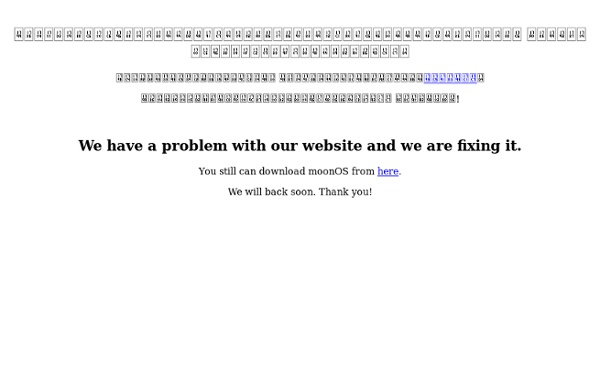



Slackware Liber Libræ sub figura XXX :: The Book of the Balance sub figura XXX The Book of the Balance 0. Learn first - Oh thou who aspirest unto our ancient Order! 1. 2. 3. Is it but now that the Higher Life is beset with dangers and difficulties; hath it not ever been so with the Sages and Hierophants of the past? 4. 5. 6. 7. 8. 9. 10. 11. 12. 13. 14. 15. 16. 17. 18. 19. 20. 21.
Puppy Linux worldclock.swf (application/x-shockwave-flash Object) KDE SliTaz SliTaz GNU/Linux is a light-weight, community-based Linux distribution suitable for use on older hardware or as a Live CD or Live USB.[3][4][5][6] System requirements[edit] SliTaz GNU/Linux is supported on all machines based on the i486 or x86 Intel compatible processors.[2] The Live CD has four variants of SliTaz, requiring from 192 MB of RAM for the Core system to 48 MB for a text mode and X Window System.[2] Slitaz can even run in 16 megabytes of RAM and a little swap memory. [7] SliTaz can be booted from a Live CD, Live USB, floppy disk, or a local area network,[8] or can be installed, requiring approximately 100 MB of hard disk space.[9] Release history[edit] Gallery[edit] See also[edit] References[edit] External links[edit]
SliTaz GNU/Linux Internet U.S. Army soldiers "surfing the Internet" at Forward Operating Base Yusifiyah, Iraq The Internet is a global system of interconnected computer networks that use the standard Internet protocol suite (TCP/IP) to link several billion devices worldwide. The origins of the Internet date back to research commissioned by the United States government in the 1960s to build robust, fault-tolerant communication via computer networks.[2] This work, combined with efforts in the United Kingdom and France, led to the primary precursor network, the ARPANET, in the United States. Most traditional communications media, including telephony and television, are being reshaped or redefined by the Internet, giving birth to new services such as voice over Internet Protocol (VoIP) and Internet Protocol television (IPTV). Terminology The Internet, referring to the specific global system of interconnected IP networks, is a proper noun and written with an initial capital letter. History T3 NSFNET Backbone, c. 1992.
Application software Application software is all the computer software that causes a computer to perform useful tasks beyond the running of the computer itself. A specific instance of such software is called a software application, application program, application or app.[1] The term is used to contrast such software with system software, which manages and integrates a computer's capabilities but does not directly perform tasks that benefit the user. The system software serves the application, which in turn serves the user. Application software applies the power of a particular computing platform or system software to a particular purpose. Terminology[edit] In information technology, an application is a computer program designed to help people perform an activity. Application software classification[edit] There are many different ways to divide up different types of application software, and several are explained here. There are many types of application software: Information worker software[edit] See also[edit]
Linux Linux ( History[edit] Antecedents[edit] With AT&T being required to license the operating system's source code to anyone who asked (due to an earlier antitrust case forbidding them from entering the computer business),[23] Unix grew quickly and became widely adopted by academic institutions and businesses. In 1984, AT&T divested itself of Bell Labs. Linus Torvalds has said that if the GNU kernel had been available at the time (1991), he would not have decided to write his own.[26] Although not released until 1992 due to legal complications, development of 386BSD, from which NetBSD, OpenBSD and FreeBSD descended, predated that of Linux. MINIX, initially released in 1987, is an inexpensive minimal Unix-like operating system, designed for education in computer science, written by Andrew S. Creation[edit] In 1991, while attending the University of Helsinki, Torvalds became curious about operating systems[28] and frustrated by the licensing of MINIX, which limited it to educational use only.
I think that's exactly what i used with Enlightment on it :)) funny :P by taranasus Jun 19
It's prity nice, but i haven't used it that much. Used to have it on a Puppy Usb drive... Puppy! Need to pearl that by taranasus Jun 19
I want to test out the LXDE version when it comes out by taranasus Jun 19